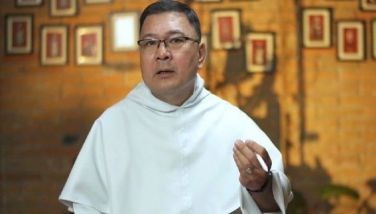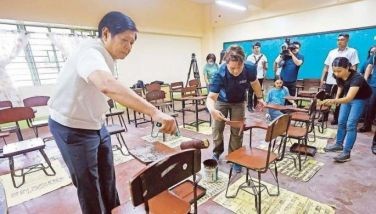Now open: House of Marcos era horrors
MANILA, Philippines – “Much of what you will see and experience may be disturbing, haunting or uncomfortable. It was meant to be that way. So be prepared.”
These words, flashed on a video screen, welcome visitors to the People Power Experiential Museum, which seeks to educate the public about the horrors of martial law.
The museum can be particularly useful for the younger generation who only learned about martial law through textbooks and have not had the chance to hear from those who suffered during the Marcos dictatorship.
The museum tour lasts only about 40 minutes and can be attractive for the gadget-obsessed selfie generation.
Located at Camp Aguinaldo in Quezon City, one of the detention centers for activists during the Marcos dictatorship, the museum recounts stories of Filipinos who bravely endured and fought against injustice at a time when the military was being used to trample on human rights.
It combines theater, cinema, photography and other allied arts to recreate the stories of martial law and the bloodless revolution that restored democracy in the country.
The People Power Coalition said the experiential museum “aims to bequeath the ideals that inspired millions to stand against the tanks and armed troops of the Marcos dictatorship 30 years ago.”
The museum features nine halls, each representing not only periods in history but also themes that underscore the enduring narrative of martial law and the 1986 EDSA Revolution.
In the Hall of Restless Sleep, visitors can find bound people sleeping on army cots as videos of former president Ferdinand Marcos declaring martial law are being played. The hall represents the lulling of the Filipino nation to sleep by martial law and the suppression of freedoms.
The walls of the Hall of Hidden Truths are filled with photos of slums and beggars, a reflection of poverty and inequality during the Marcos administration.
When visitors peep through holes, they will see a masquerade ball, where the privileged few revel in lavish festivities. An operatic version of “Dahil sa Iyo,” a favorite song of former first lady Imelda Marcos, is played repeatedly.
The third hall, the Hall of Orphans, features child actors who portray the children of those who were abducted, tortured and who disappeared during martial law.
Carrying papers containing the photos of missing activists, the child actors cry as they ask the visitors if they have seen their parents.
The Hall of the Lost is about contrasts. A television shows government propaganda videos in an area surrounded by photos of missing activists. Sculptures depicting the families of the so-called desaparecidos or the disappeared can be seen behind the television, symbolizing lack of closure.
In the Hall of Maze, visitors can find school armchairs and watch videos about people who were abducted by state forces during martial law.
The Hall of Pain, meanwhile, educates visitors on torture methods through a carnival-style show. The host of the show will mock those who take issues of torture lightly.
“What if we show you real torture? Will you still pretend to be blind? Will you still enjoy watching it?” the host said.
In the Hall of Forgotten Martyrs, visitors will meet freedom fighters who represent different sectors of their generation, namely Edgar Jopson (youth), Macli-ing Dulag (indigenous Filipinos), Evelio Javier (middle class and civil society) and Lorena Barros (women). Actors portraying them recite three-minute monologues about their struggles and how they were killed by government forces.
The Hall of Awakening features a video showing the assassination of Sen. Benigno “Ninoy” Aquino Jr.
The hall has two sections – the first depicts the mass demonstrations that led to the 1986 People Power Revolution through a rain of yellow confetti.
The second part displays a Marine armored personnel carrier, which symbolizes the role of the military in the historic revolt.
The Hall of Action displays memorabilia and symbols from the 1986 revolt, including yellow pin wheels and reproductions of iconic photographs.
The museum will be open to the public from Feb. 25 to 26.
Presidential Communications and Operations Office Secretary Herminio Coloma Jr. urged the public to visit the museum so they can learn from the lessons of the past.
“If we don’t learn from our history, we will commit mistakes. The history of EDSA started with the declaration of martial law. People protested the dictatorship, which should not happen again,” he said.
- Latest
- Trending































